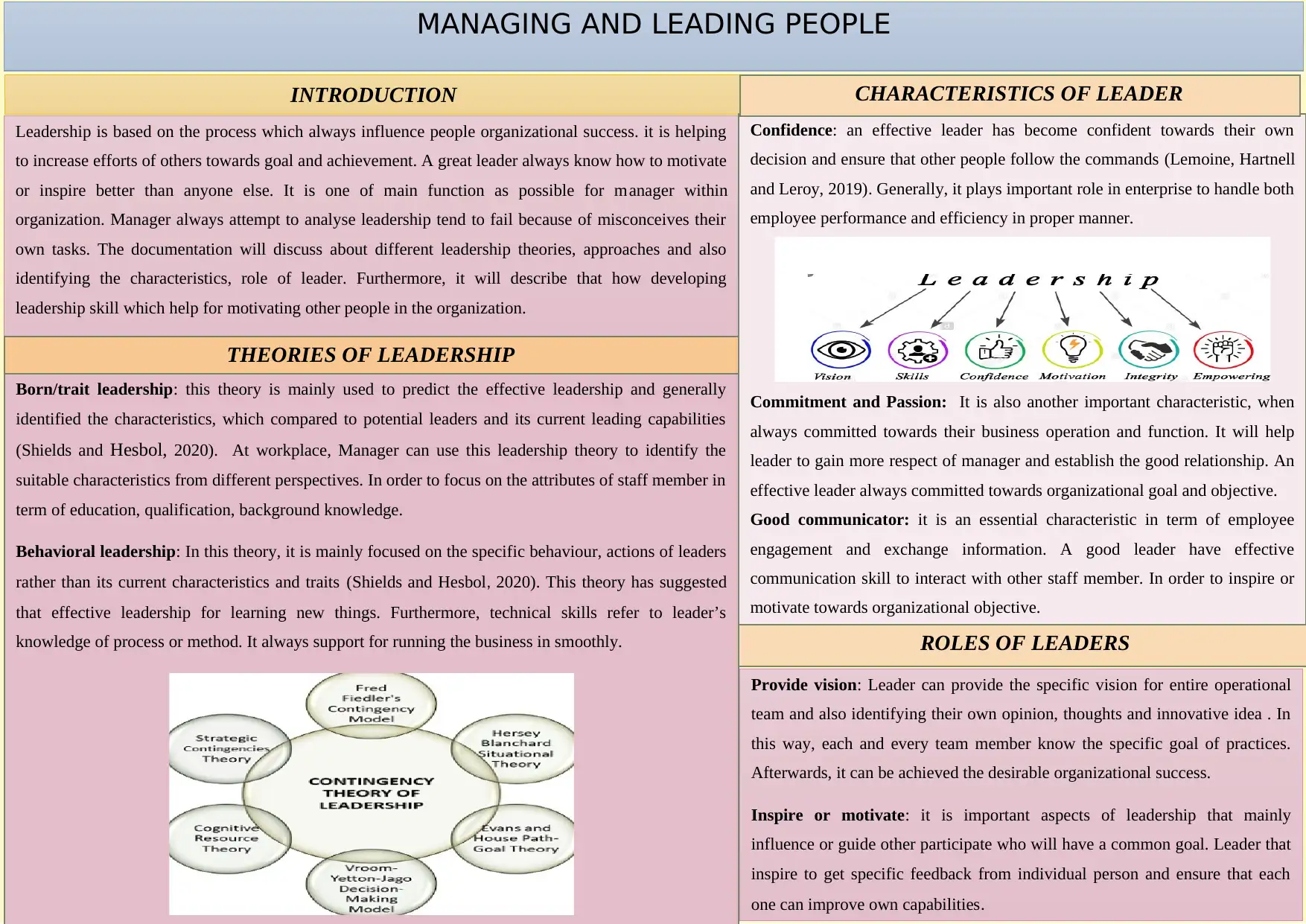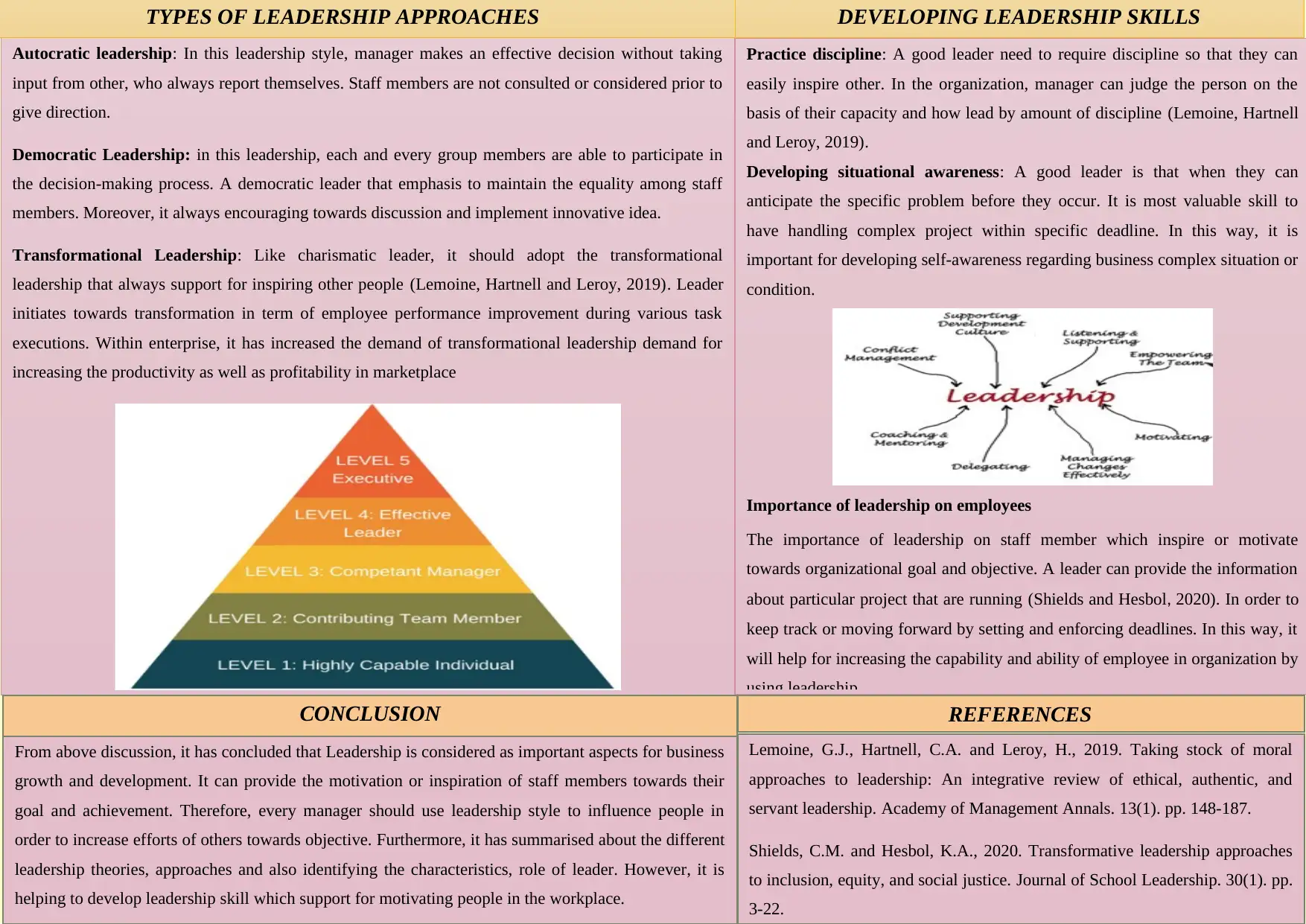Managing and Leading People: Leadership Theories and Practices Report
VerifiedAdded on 2023/01/07
|2
|1022
|91
Report
AI Summary
This report provides a comprehensive overview of leadership, examining various theories, approaches, and their impact on employee motivation and organizational success. It begins by defining leadership and highlighting key characteristics of effective leaders, such as confidence and communication skills. The report then delves into different leadership theories, including trait/born leadership and behavioral leadership, and explores their application in the workplace. It further identifies the roles of leaders, such as providing vision and inspiring others. The report also discusses different leadership approaches, including autocratic, democratic, and transformational leadership, and how to develop leadership skills. The importance of leadership in motivating employees and achieving organizational goals is also emphasized. Finally, the report concludes by summarizing the key findings and underscoring the significance of leadership in fostering employee commitment and driving organizational success. The report is a valuable resource for students seeking to understand and enhance their leadership capabilities.
1 out of 2







![[object Object]](/_next/static/media/star-bottom.7253800d.svg)